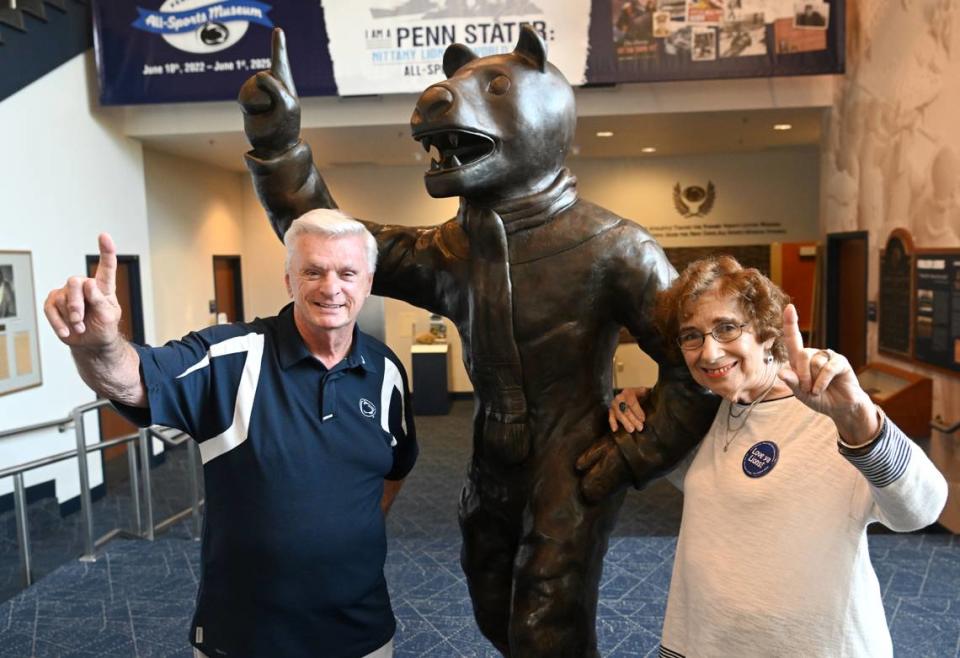Penn State football fans weren’t always so crazy. How Back the Lions helped change the game
- Oops!Something went wrong.Please try again later.
On a 50-degree New Year’s Eve in 1972, fans packed into Tulane Stadium in New Orleans to watch Penn State take on Oklahoma in the Sugar Bowl — and the two fan bases couldn’t have looked more different.
Sooner fans came into the contest representing their squad hard, sporting the crimson and white everywhere. But Penn State? Just regular clothes, with minimal school colors. Nothing extra.
That’s when a group of fans knew something had to change. Someone had to back the lions.
“(Oklahoma fans) were real nuts like we are now,” said State College resident Glenn Sheaffer, recalling the game where most Penn State fans quietly watched. “(So they said) ‘we need something like that.’”
Other fans, whom Sheaffer would come to know, quickly assembled a fan group dubbed “Back the Lions” in hopes of getting Penn State fans to act like the southern schools did. Fast forward 50 years, and Beaver Stadium will be full Saturday for Penn State’s White Out game. More than 110,000 fans decked out all in white will flood the stadium for what is widely considered one of the best atmospheres in college football — and doing so with such fervor and energy that it could also be described as a little nuts.
Some credit Back the Lions with helping Nittany Lions fans develop the reputation they have today.
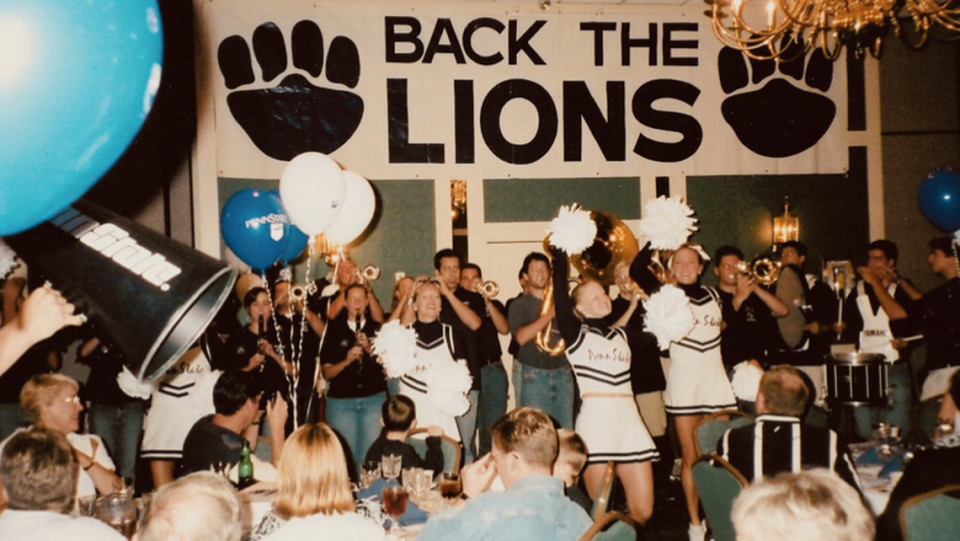
Starting simple and making contributions
Sheaffer is now the group’s treasurer and his wife, Berni Sheaffer, serves as Back the Lions’ vice president. They didn’t found the fan club, but the college sweethearts joined in 1978 and played a big part in the 50 years that Back the Lions has been around.
Officially, it’s unclear who founded Back the Lions, but Penn State historian Lou Prato, who was also the first director of the Penn State All-Sports Museum, believes it was started by the late Jane and Robert Zimmerman, mostly due to the lack of nationwide support for the program.
“The 1973 team, even though they were undefeated, finished fifth in the polls,” Prato said. “That’s what caused the Zimmermans to say, ‘Wait a minute, we’ve got to get the fans behind to support the team.’”
Berni and Glenn believe their group’s founders were mostly women, even making it possible that Sue Paterno, wife of Joe Paterno, played a role in the group’s start.
“I wouldn’t be surprised if Sue Paterno didn’t have something to do with it,” Berni said. “That’s the kind of thing she did.”
In fact, Sue had been pushing for more fan spirit well before the establishment of Back the Lions. In 1966, she and some of her friends painted the Nittany Lion statue orange with washable paint before a matchup with then-rivals, Syracuse, due to the lack of fan spirit. This act, obviously, caused an uproar and her strategy seemed to work.
“I painted it because everyone would sit on their hands and didn’t clap — we knew we wouldn’t get caught and it worked,” she told the Daily Collegian in 2009. “It’s gone beyond my wildest dreams.”
Back the Lions didn’t attempt to cause a stir, though. The group simply implored others to support the squad and wear team colors. It started simple. A radio ad relayed, “Back the Lions said wear blue and white to the game,” Glenn said.
The organization was also responsible for the “Back the Lions” signs fans held up in the stands as well as “Love ya Lions!” buttons that fans could wear. And although its physical contributions made an impact on Penn State’s fandom, most of its support has come through monetary donations.
“Back the Lions turned out to be more than a thought,” Prato said.
One of the biggest things the group does is the scholarship for the Nittany Lions mascot, Berni said.
“We support fan enthusiasm — and that’s the Blue Band, the dance team, the cheerleaders and the lion,” she said.
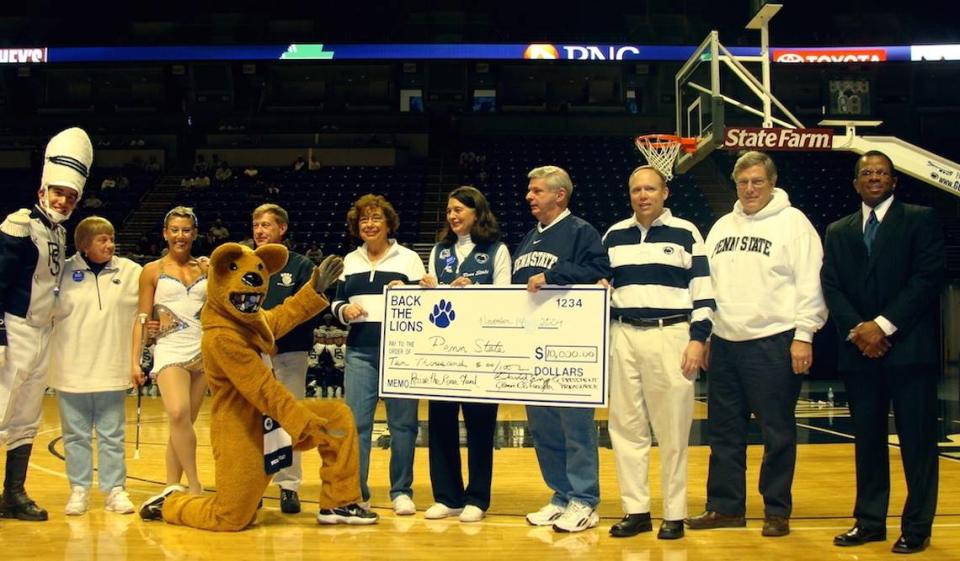
The scholarship for the mascot is known as the Norm Constantine Endowment. Constantine was a Nittany Lion mascot from 1978-1980 who showcased Penn State spirit in every facet before being paralyzed in a hit-and-run in 1981.
The group’s contributions weren’t done with the scholarship; Back the Lions even sponsored the team’s parade after it completed an 11-1 season in 1985. They also donated the Nittany Lion statue that still sits in the Penn State All-Sports Museum lobby.
Through the decades and amid Back to the Lions’ efforts to drum up support, things changed for Penn State football, which now has one of the most-recognized fan bases in the country.
“It took years for (the cheers) to catch on,” Prato said. “It probably does go a lot back to the Back the Lions group.”
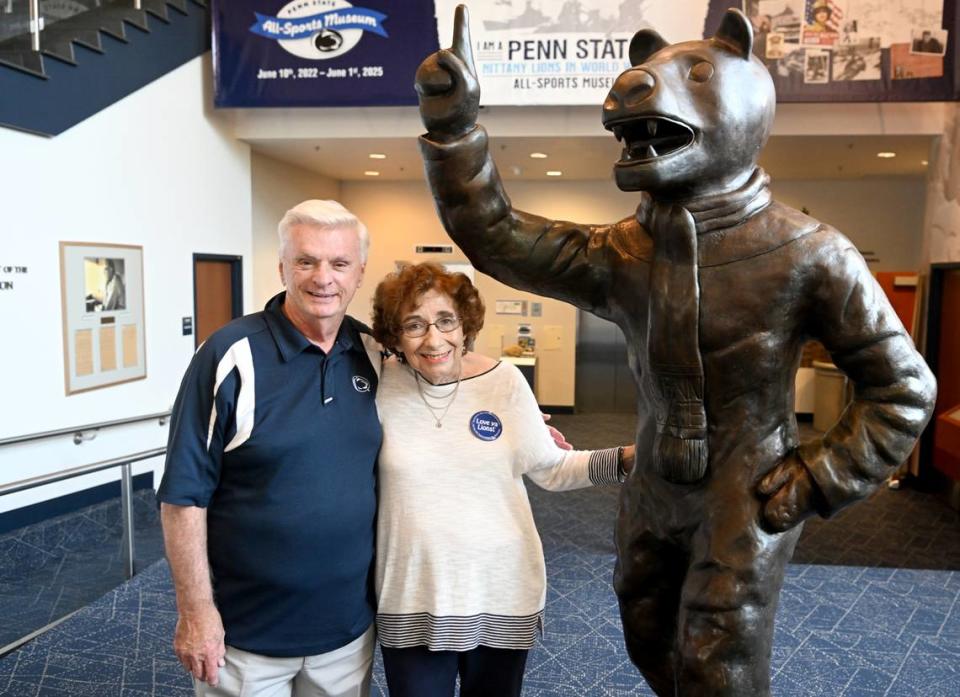
Back the Lions is here to stay
Glenn has seen firsthand how Penn State has now become more than football. It’s become a culture.
“Everything about Penn State now is ‘We Are,’” he said. You go on vacation, you’re in California, they have a blue shirt on that has ‘We Are’ on it.”
At one point, the group had almost 10,000 members, with a very low-stakes way to join — you could give as much as you wanted, Glenn said.
The group hasn’t been able to attract as much support from the younger generations and has seen its numbers decrease in recent years. There’s no website but Back the Lions still regularly puts out a newsletter, the most recent of which was a 50th anniversary edition.
Back the Lions President David Engle said that despite the group’s older membership, they still get contributions to cover the Nittany Lion’s endowment as well as the Raise the Roar fund.
“We’ve been doing it for 50 years,” Engle said. “We want people to give to Back the Lions so the mascot continues to have a scholarship.”
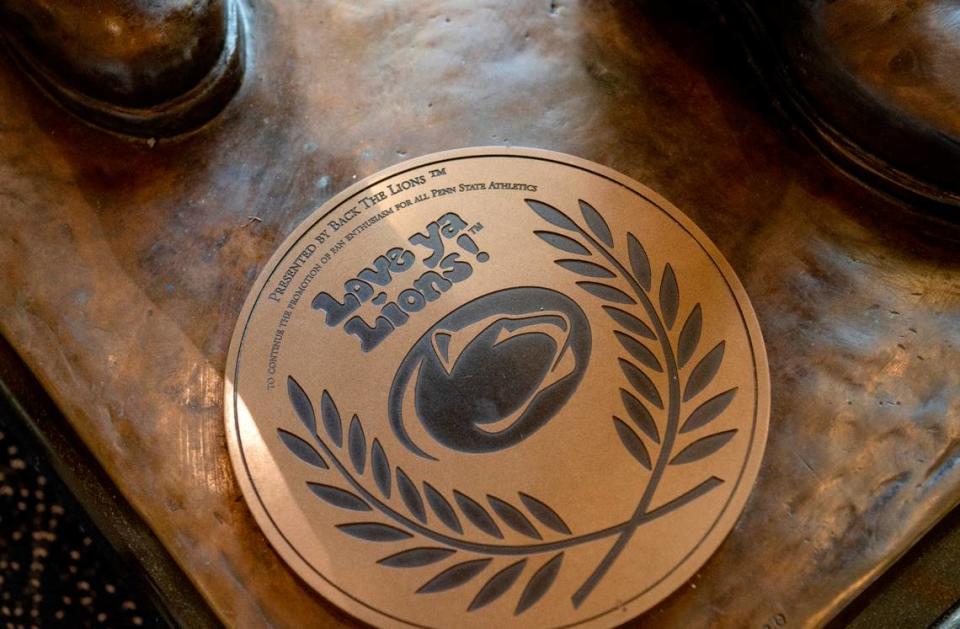
Berni and Glenn, who will be at Saturday’s White Out game, plan on sticking with Back the Lions. They hope to continue with the group so long as the endowment is able to be taken care of, though they joked that NIL might make their contributions to the Lion obsolete eventually.
The small donation needed to join the group is $5, and it can be sent to P.O. Box 904, State College, PA, 16804. Upon joining, the new member would also get two newsletters, and a chance to win prizes, with one of the past prizes being a John Cappelletti trading card.
“Back the Lions has shown that while a few people giving thousands of dollars apiece can result in a large donation, so can thousands of people making small donations,” Glenn wrote in an email.
The couple made clear that they don’t want to take credit for Penn State’s drastic shift in fan support, but as members of one of the first organized groups, they admitted it “feels good” to play a part the change that happened.
“They cheered when a touchdown was scored,” Berni said, recalling the games of decades ago. “But not like now.”
